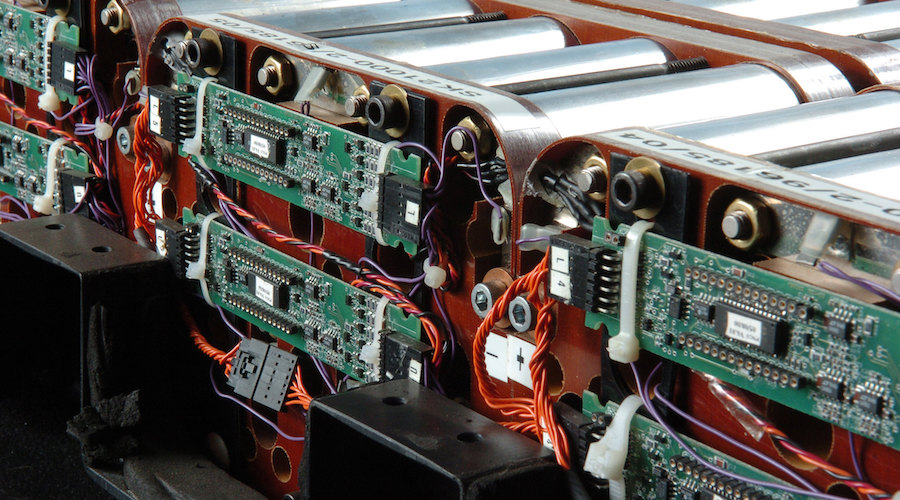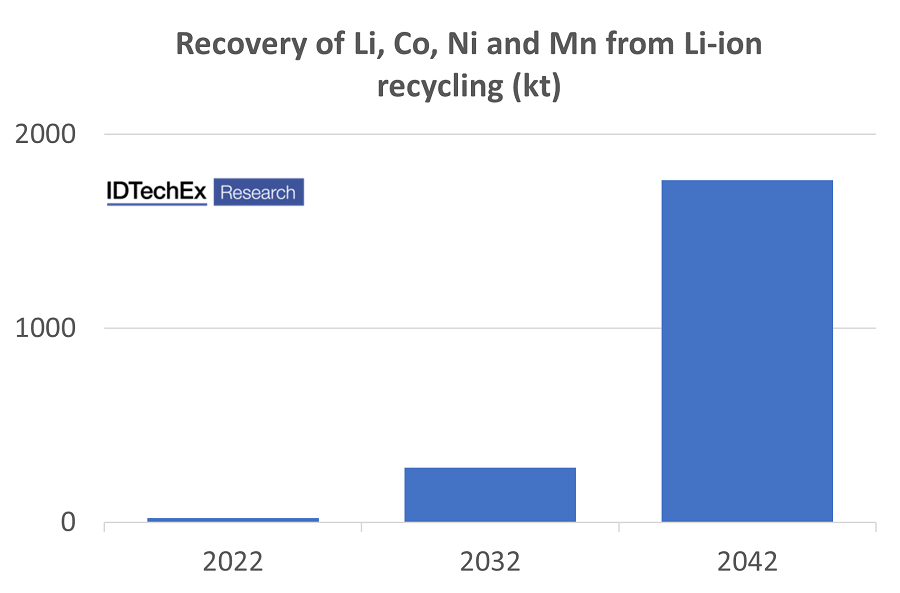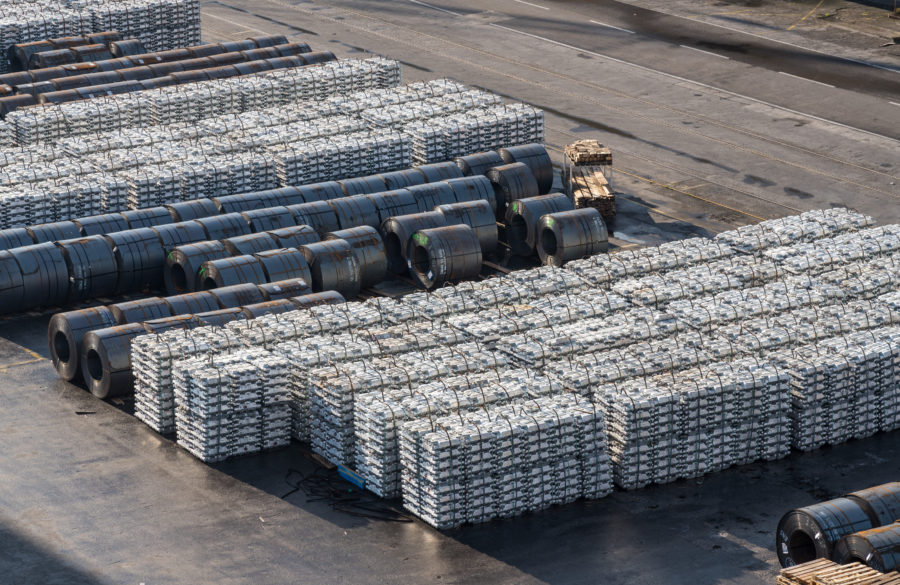How much could battery recycling actually aid cobalt, lithium supply shortages?

A recent report by IDTechEx estimates that <8% of the global cobalt demand and <6% of the lithium demand, will be supplied by recycled Li-ion batteries by 2030.
According to the market analyst, a combined total of over 180,000 tonnes of lithium, cobalt, nickel, and manganese could be recovered by 2030 through Li-ion recycling, a value which is forecast to grow by approximately 10x by 2042.
For the UK-based firm, recycling will not be a silver bullet and fix all the challenges faced by the Li-ion industry, but it can help the shift toward a circular economy and will play an important role in minimizing material shortages and the negative impacts of Li-ion battery production.
In the view of the experts at IDTechEx, one thing to keep in mind is that it is possible to increase the proportion of recycled cobalt given that the metal is mostly used in consumer electronics, where growth in demand is expected to be much slower than in EVs, and the reduction of cobalt intensity in electric vehicle batteries.

“In theory, approximately 15% of cobalt demand could be met from recycled material by 2030,” the report reads. “In reality, as outlined in IDTechEx’s forecasts, this is unlikely to happen due to the difficulty in collecting and diverting the high cobalt batteries from consumer electronics. Ultimately, all supply chain stakeholders need to take responsibility for the ethical impacts of their products.”
In the view of the experts at IDTechEx, the inherent value in consumer electronics batteries suggests more comprehensive collection and distribution to the relevant recycling facilities needs to be considered. This is particularly important when considering the increasing possibility of material supply bottlenecks.
“IDTechEx estimates that cobalt shortages could arise from the mid-late 2020s, with bottlenecks also expected to arise for lithium, and possibly other materials as well.”
“As a result, Li-ion recycling takes on added importance. While it will not be able to meet forecast material demand in the near future, it could play a role in minimizing material shortages and bottlenecks, which would disrupt the transition to electric vehicles, the deployment of stationary energy storage, and depress the market for Li-ion batteries.”
More News
China’s mining investment under Belt and Road Initiative sets new record – report
China's overseas mining investment under its Belt and Road Initiative hit another peak last year at $21.4 billion.
March 29, 2025 | 10:26 pm
Column: Europe’s future metals strategy hindered by current crisis
Chinese over-capacity and high energy prices have accelerated the long-term decline of European steel and aluminum production.
March 29, 2025 | 02:25 pm
{{ commodity.name }}
{{ post.title }}
{{ post.excerpt }}
{{ post.date }}



4 Comments
James West
A major limitation on this sort of article is the tendency to lump all the main EV battery metals together. I’d be interested to know to what extent the report takes into account the very different demand trajectories which are likely to develop quite rapidly for the lithium, nickel, and cobalt suite of battery metals. Lithium is pretty much irreplaceable over the medium term, and has extremely poor recycling rates. Nickel is difficult to substitute, but nowhere near as critical as lithium. Cobalt is being massively reduced in NMC batteries as we speak. A recent report which makes clear the huge potential huge divergence between these metals is “Known unknowns: the devil in the details of energy metals demand” by CSIRO.
Rod McIntyre
James, not addressing your comments exactly, but Australian (Neometals) – German JV company Primobius in accelerating commercialisation of Neometals (ASX:NMT) battery recycling technology which can separate the various minerals.
Robert Winston
I have followed the rise of Neometals since it first came on the radar in mid 2014. It was then known as Reed Resources. They sold their lithium mine in WA to Chinese interests at a huge profit and have invested in pioneering research into recycling EV batteries in Europe. Forward planning included used battery supply from Russia. This now presents a significant problem which is reflected in the share price fall. They have several strings to their bow and will overcome the difficulties. They also have JV’s with European partners is was very prudent. Sovereign risk is the very devil no one has ever controlled.
Brian Olson
Check out $ABML. Up and coming US recycler.
I agree neither mining or recycling alone will solve the problem. It will be a combination.